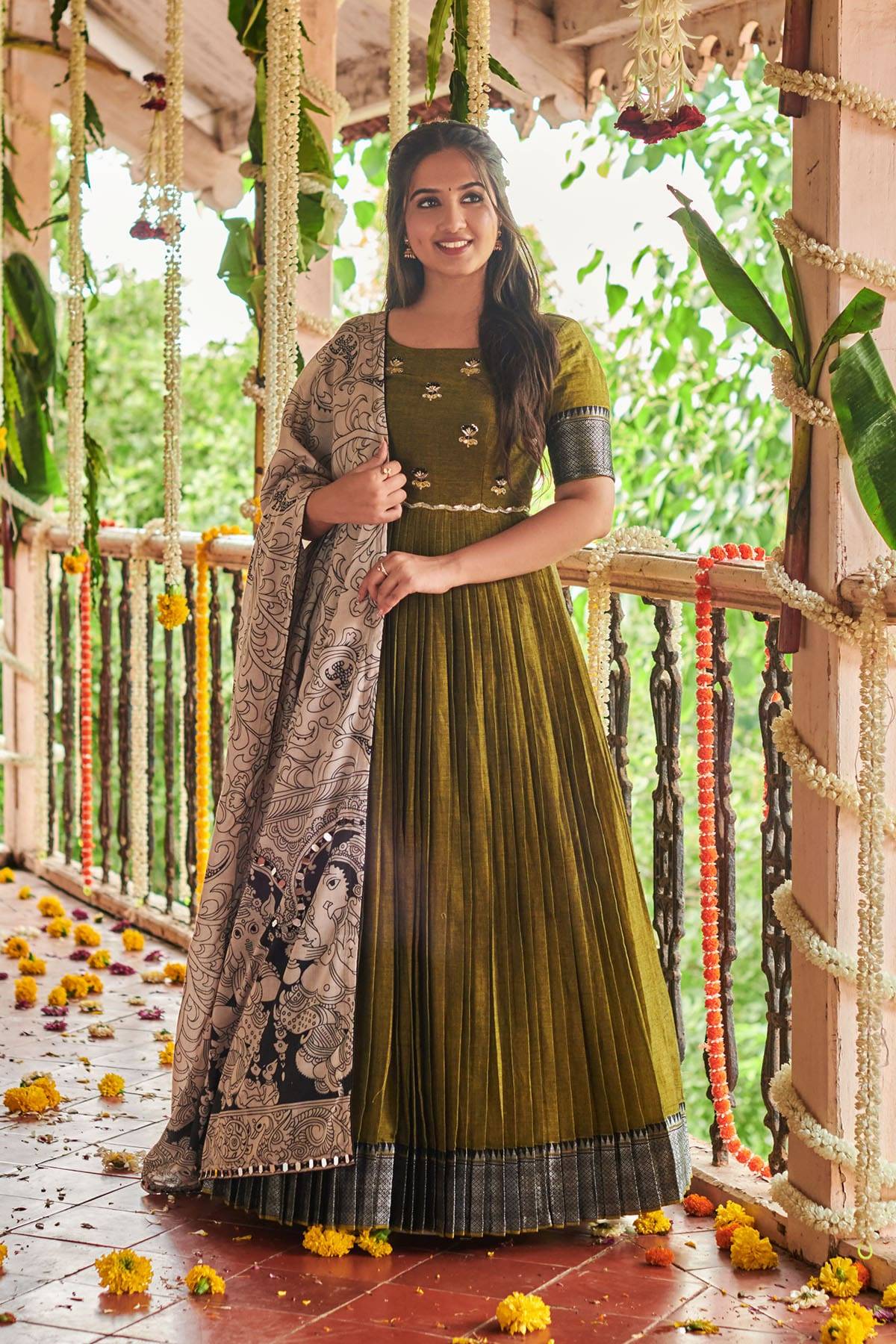
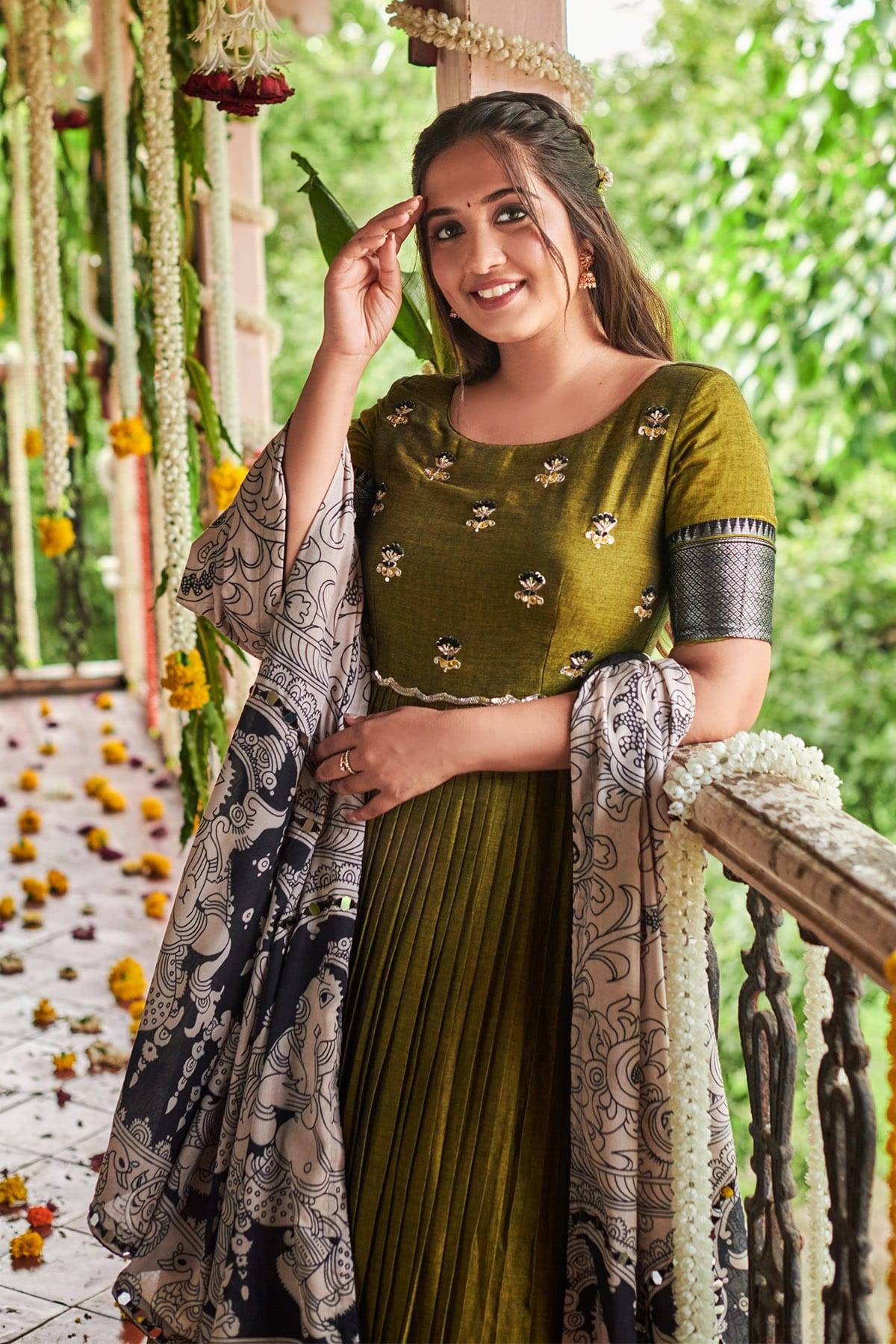
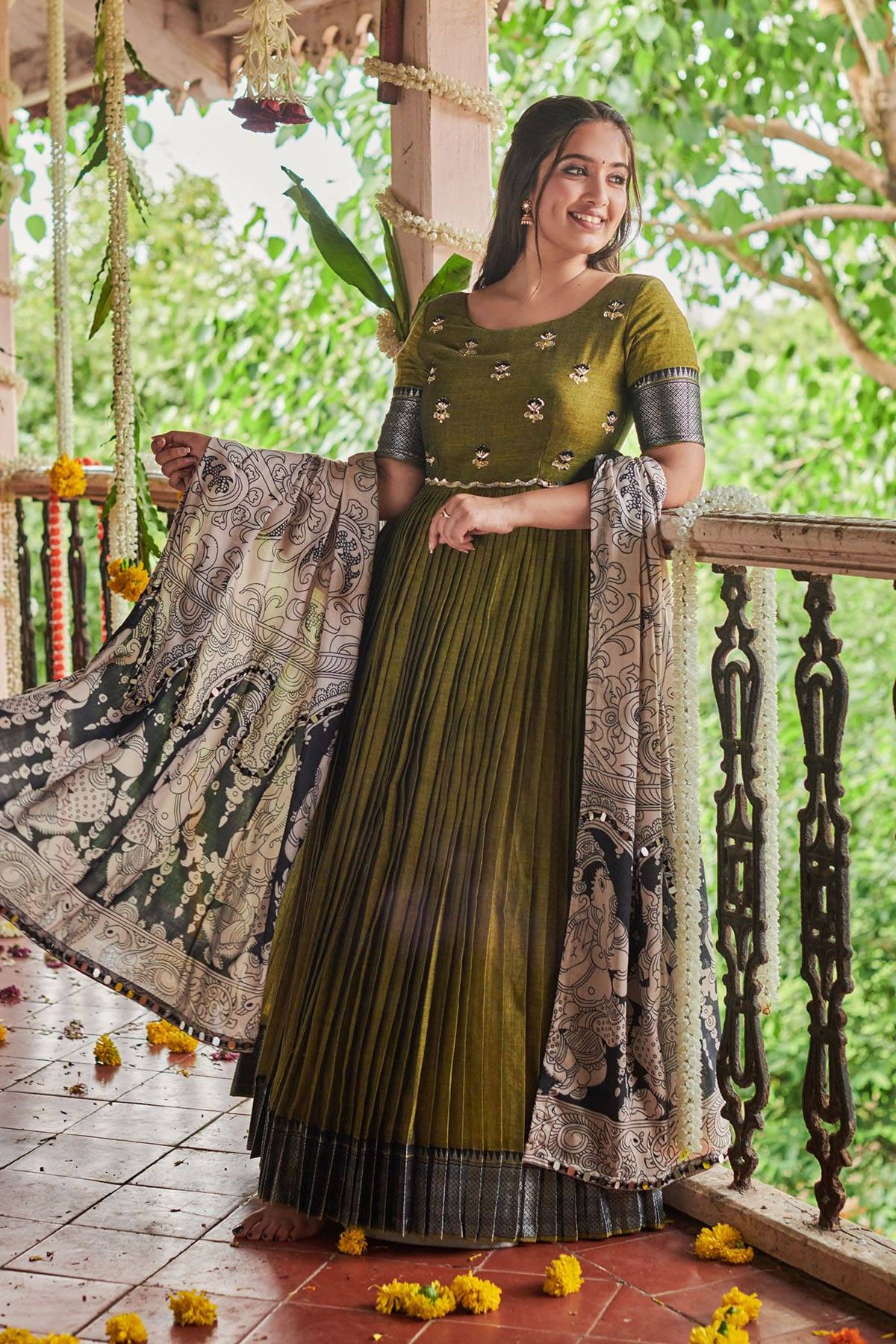
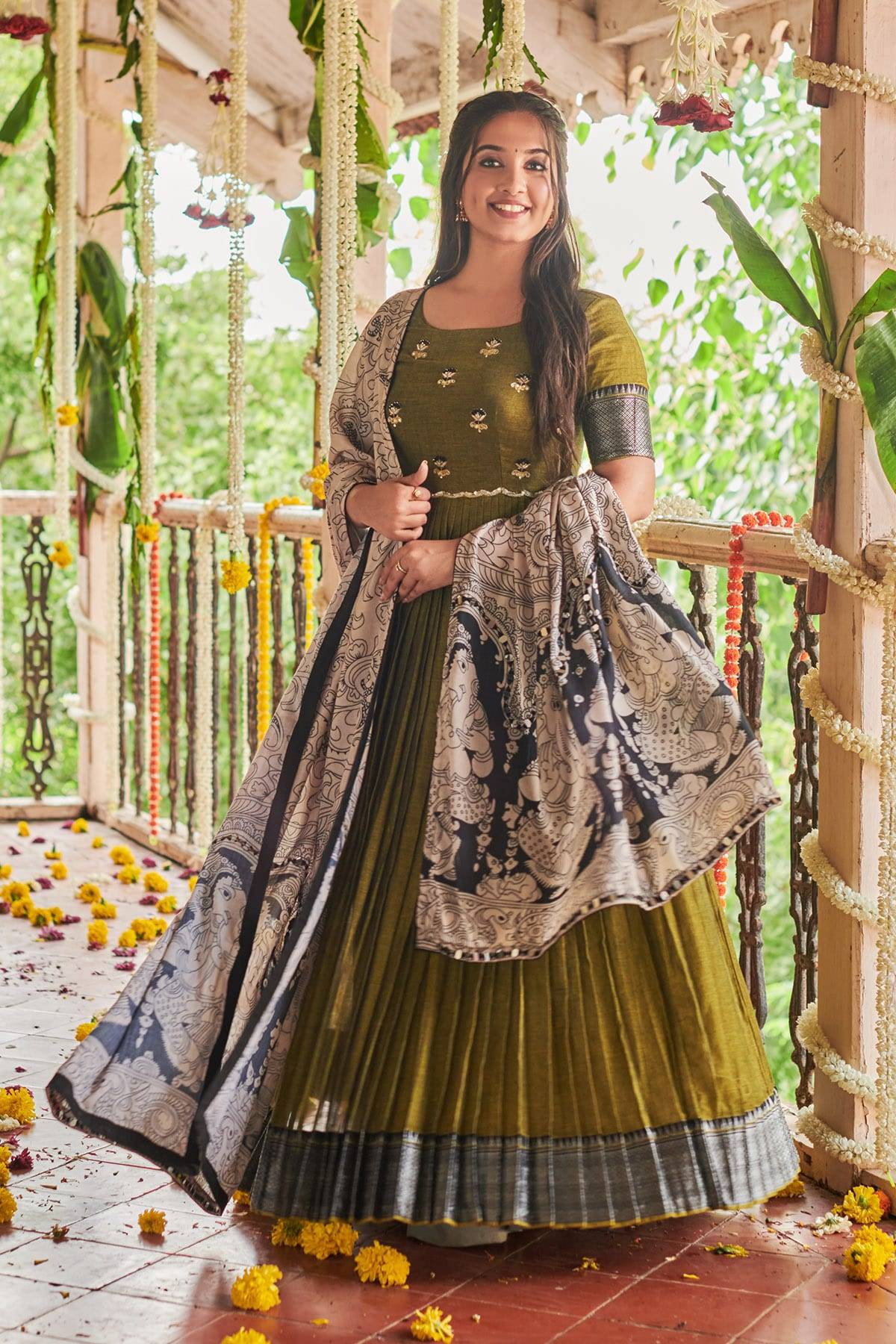
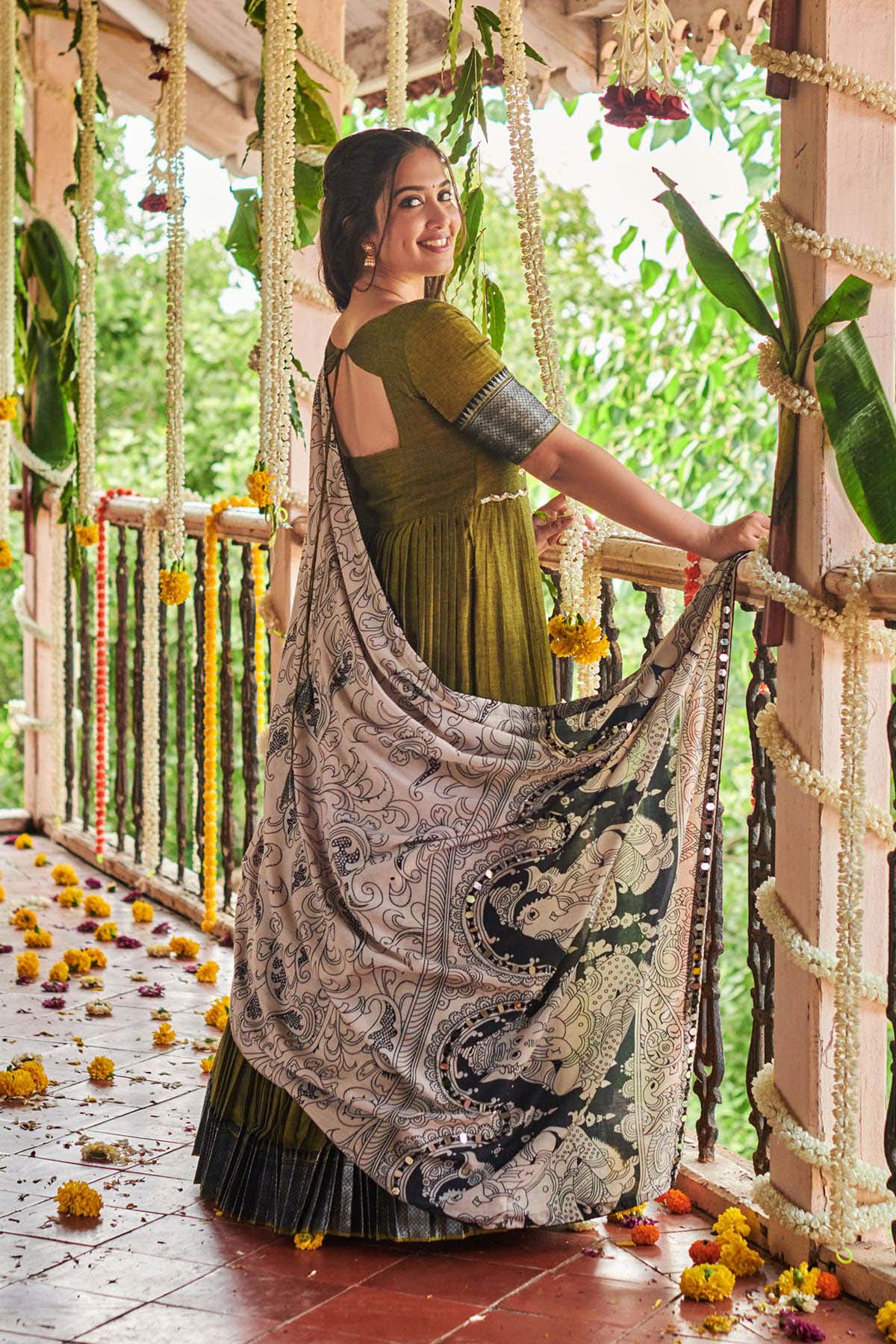
Juniper Green & Black Handloom Dress
Product Description
Experience a unique blend of modern and traditional vibes with our “Juniper Green & Black Handloom Dress.” This dress is a perfect fusion of style and elegance. Crafted from Handloom Narayanpet fabric in a mesmerizing Light Green, it has a striking Black Cotton Dupatta adorned with Kalamkari prints and mirror work. The meticulous handwork in the Yok section and the intricate border detail make it a true adventure for your fashion-forward escapades. (Side Zip Attached)
Washing Care: Dry Clean
Find My Size
Bra Size
Cup Size
Your Recommended Size :
How to Find Cup Size?


Narayanpet, Cotton
Mehndi Green, Black
Handwork, Mirrorwork, Kalamkari
55inch
Ready To Ship
No returns /exchanges are possible in case of international orders or for products purchased during any sale event.
Please read our refunds policy here.
As we ship your orders via third-party shipment agencies, we want to ensure that the parcel reaches you intact and in good condition. Therefore, in case you receive a damaged, broken, or opened parcel, we request you to record a video and take images of the same and not accept the order. You can mail all the images and videos along with the order number so that we can use the same to resolve the issue for you at the earliest and settle claims with the shipment agency.
This product has been crafted by hand and may have slight irregularities or imperfections in color or embellishment or weaving. Any weaving or embroidery irregularities or shade variations are characteristic of the fabric and cannot be considered defects. colors as you see on the website may vary from the actual colors of the garments due to the process of photography and your device.
Copyright protection in India is governed by the Copyright Act of 1957. Under this Act, a photograph is considered an 'artistic work' and is thus protected. If someone violates the copyright, the photographer can seek legal remedies, including compensation for damages.




